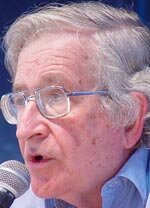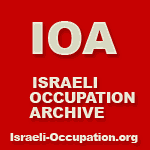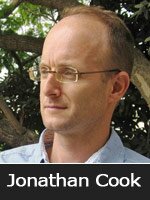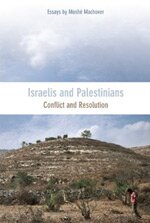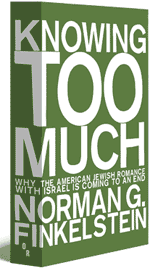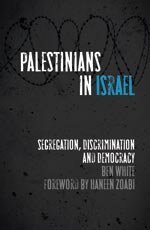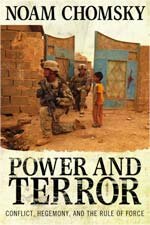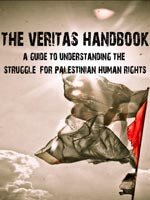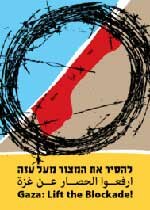By Ran Greenstein – Cape Town, November 2011
presented at the Russell Tribunal on Palestine

Ran Greenstein
Apartheid is a system of racial domination, in which a dominant group exploits, oppresses, marginalizes and excludes subordinate groups. The specific forms of these practices may vary from one case to another. They must bear similarities to South African state practices from 1948 to 1994, but need not be identical to them, as long as the general discriminatory thrust is similar.
Our focus should be on the oppressive and exclusionary practices of the state rather than on the precise term used to refer to the groups in society: these groups may be defined primarily in racial or ethnic or national terms. In line with the UN Convention on the elimination of all forms of racial discrimination, we can talk about racial discrimination or domination in situations in which no ‘races’ exist (in other words, where physical differences are irrelevant to the ways in which groups define themselves and are defined by others). Oppression on ethnic or national grounds can be defined as racial domination as well.
The relevant groups in Israel/Palestine are Israeli Jews and Palestinian Arabs. These groups are not racial in nature but rather based on ethnicity (meaning, a sense of common origins and culture), national identity and religion. For our purposes here, it does not matter whether physical or biological features form part of the system of domination: the crucial point is whether the state uses group membership in order to allocate civil, social and political rights in a differentiated manner.
In Israel/Palestine, group membership is an official category imposed and monitored by the state, not simply a voluntary identity. It is very difficult to move from one group into the other. Although theoretically possible, it is extremely rare in practice. To be defined as Jewish has nothing to do with religious observance. Rather it means to be recognised by the state as a member of the Jewish community. This membership is codified in population registration data, kept by the Ministry of the Interior. It carries with it certain rights and obligations, having to do with immigration and residence rights, as well as access to land and military service (which in turn carries with it certain rights and obligations).
While Israeli Jews are a group unified by law, sharing the same legal status wherever they reside, Palestinian Arabs are divided by their legal status into citizens, occupied residents (whose residence rights may be lost if they leave the territory in which they live), and the 1948 refugees who do not have the right to return to any part of historical Palestine. No such restrictions apply to Jews: in fact, those who are not citizens already can acquire Israeli citizenship automatically by relocating to the country.
This distinction is used to expand Israeli citizenship beyond its territory (potentially to all Jews) and to restrict citizenship within it (Palestinian residents of the occupied territories have no citizenship and cannot become citizens, and the same applies to refugees). Thus, Israeli citizenship is open to all non-resident members of the dominant Jewish group, wherever they are and regardless of their personal history and actual links to the territory. It is closed off to all non-resident members of the subordinate Palestinian group, wherever they are and regardless of their personal history and actual links to the territory.
Israel as a state is based on the permanent blurring of physical boundaries. At no point in its 63 years of existence have its boundaries been fixed by law, nor are they likely to become fixed in the foreseeable future. Its boundaries are permanently temporary, as evidenced by continued talk of the 1967 occupation as temporary, even though it has lasted as long as historical apartheid in South Africa (which formally lasted 46 years, but effectively started to be dismantled after 42 years). At the same time, its boundaries are asymmetrical: porous in one direction (expansion of military forces and settlers into neighbouring territories), and impermeable in another direction (severe restrictions or total prohibition on entry of Palestinians – from the occupied territories and the Diaspora – into its pre-1967 territories).
The Israeli regime combines different modes of rule: civilian authority with all the institutions of a formal democracy within the Green Line; and military authority without democratic pretensions beyond the Line. In times of crisis, the military mode of rule tends to spill over into the Green Line to apply to Palestinian citizens. At all times, the civilian mode of rule spills over beyond the Green Line to apply to Jews residing there. The distinction between the two sides of the Green Line is constantly eroding as a result, and norms and practices developed under the occupation filter back into Israel: as the phrase goes, the ‘Jewish democratic state’ is ‘democratic’ for Jews and ‘Jewish’ for Arabs.
Israel in fact is a ‘Jewish demographic state’. Demography – the fear that Jews may become a minority – is the prime concern behind the policies of all mainstream forces. All state structures, policies and proposed solutions to the Israeli-Palestinian conflict are geared, in consequence, to meet the concern for a permanent Jewish majority exercising political domination in the State of Israel (in whichever boundaries).
How do these features compare with historical apartheid in South Africa?
The foundation of apartheid was a racial distinction between whites and blacks (further divided into coloureds, Indians and Africans, with the latter sub-divided into ethnic groups), rather than an ethno-religious distinction. Racial groups were internally divided on the basis of language, religion and ethnic origins, and externally linked in various ways across the colour line (Christianity as a multi-racial religion, Afrikaans and English as multi-racial languages, English as a lingua franca, and so on). This can be contrasted with Israel/Palestine in which lines of division usually overlap. All potential bases for cross-cutting affiliations that existed early on – anti Zionist orthodox Jews, Arabic-speaking Jews, indigenous Palestinian Jewish communities – were undermined by the simultaneous rise of the Zionist movement and Arab nationalism to a dominant position in the course of the 20th century. This tendency towards polarisation left no space for those straddling multiple identities.
In South Africa then, there was a contradiction between the organization of the state around the single axis of race, and social reality which allowed more diversity in practice and multiple lines of division as well as cooperation. This opened up opportunities for change. The apartheid state endeavoured to eliminate this contradiction by entrenching residential, educational, religious and cultural segregation, and by seeking to shift its basis of legitimacy from race to national identity, but to no avail. Its capacity was limited and it was further eroded over time.
In Israel/Palestine there is tighter fit between the organization of the state and social reality, with one crucial exception: Palestinian citizens are positioned between Jewish citizens and Palestinian non-citizens. They are the only segment of the population of Greater Israel/Palestine that is fully bilingual, familiar with all political and cultural realities, with enough freedom to organize but not enough rights to align themselves with the oppressive status quo. As a minority group (15-20% of Israeli citizens and of Palestinian Arabs) they cannot drive change on their own but may act as crucial catalysts for change.
Under historical apartheid in South Africa a key goal of the state was to ensure that black people performed their role as providers of labour, without making difficult social and political demands. The strategy used for that focused on externalizing them. Although they were physically present in white homes, factories, farms and service industries, they were absent (politically and legally) as rights-bearing citizens. They were expected to exercise their rights elsewhere. Those who were no longer or not yet functional for the white-dominated economy were prevented from moving into the urban areas or forcibly removed to the ‘reserves’ (also known as Bantustans or homelands): children, women – especially mothers – and old people. Able-bodied black people who worked in the cities were supposed to commute – daily or monthly and even annually, depending on the distance – between places where they had jobs (but no political rights) and the places where they had political rights (but no jobs).
This system of migrant labour opened up a contradiction between political and economic imperatives. To fulfil apartheid ideology, it broke down families and the social order, hampered efforts to create a skilled labour force, reduced productivity, and gave rise to crime and social protest. To control people’s movements, it created a bloated and expensive repressive apparatus, which put a constant burden on state resources and capacities. Domestic and industrial employers faced increasing difficulties in meeting their labour needs. From an economic asset (for whites) it became an economic liability. It simply had to go.
The economic imperative of the Israeli system, in contrast, has been to create employment for Jewish immigrants. Palestinian labour power was used by certain groups at certain times because it was available and convenient, but it was never central to Jewish prosperity in Israel. After the outbreak of the first Intifada in the late 1980s, and under conditions of globalization, it could easily be replaced by politically unproblematic Chinese, Turkish, Thai and Romanian workers. In addition, a massive wave of Russian Jewish immigration in the 1990s helped this process along. The externalization of Palestinians, through denial of rights, ethnic cleansing and ‘disengagement’, has presented few economic problems for Israeli Jews. There is little evidence of the contradiction between economic and political imperatives that undermined apartheid South Africa.
Apartheid was the latest in a long list of regimes in which white settlers dominated indigenous black people in South Africa. For most of the colonial period people of European origins were in the minority, relying on military power, technological superiority, and ‘divide and rule’ strategies, to entrench their rule. Demography was never an overriding concern. As long as security of person, property and investment could be guaranteed, there was no need for numerical dominance. When repression proved increasingly counter-productive, a deal exchanging political power for ongoing prosperity became an option acceptable to the majority of whites. Can such a deal be offered to – and adopted by – Israeli Jews, for whom a demographic majority is the key to domination and the guarantee of political survival on their own terms? It is doubtful.
In summary, then, apartheid of a special type in Israel is different from historical apartheid in South Africa in three major respects:
At its foundation are consolidated and relatively impermeable ethno-religious identities, with few cross-cutting affiliations across the principal ethnic divide in society.
It is relatively free of economic imperatives that run counter to its overall exclusionary thrust, because it is not dependent on the exploitation of indigenous labour; and
Its quest is for demographic majority as the basis for legal, military and political domination.
In all these respects it is a system that is less prone to an integrative solution along the lines of post-apartheid South Africa. At the same time, it is subject to contradictions of its own, which are crucial to its dynamics and present potential opportunities for change:
Its foundational act of ethnic cleansing left behind a weak and disorganized minority Arab group. With Palestinians no longer a demographic threat, the rump community was incorporated into the political system which displayed many characteristics of a ‘normal’ democracy. Its members used this to re-organize and build a foundation for resistance politics, combining parliamentary and protest activities to challenge Israel’s exclusionary structures from within. This location has given them a strategic vantage point from which to play a key role in the struggle to transform the system.
The geographically expansionist drive of the Zionist project has come into clash with the demographic imperative to ensure a Jewish majority. Ethnic cleansing along the lines of 1948 might provide a way to reconcile these contradictory thrusts, but it is not feasible under the glare of international media and public opinion. Immediate change is unlikely, but it is clear that the status quo is becoming increasingly unstable and is not going to last long.
Ran Greenstein is an Associate Professor in the Department of Sociology at the University of the Witwatersrand, Johannesburg, South Africa.




















